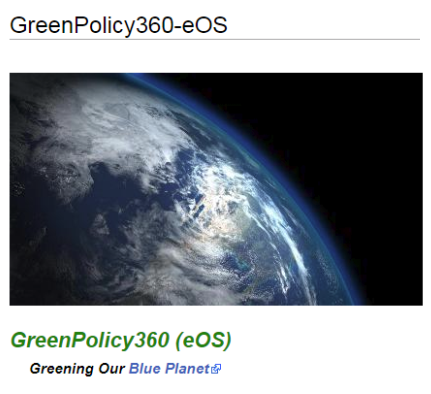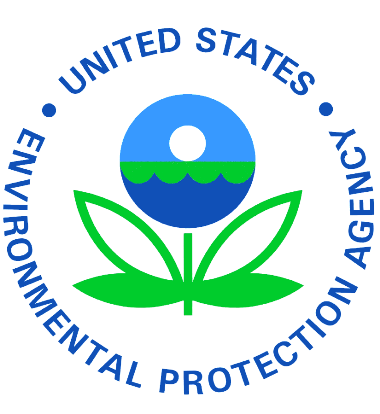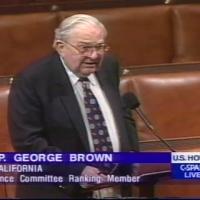Green Best Practices: Difference between revisions
Siterunner (talk | contribs) No edit summary |
Siterunner (talk | contribs) No edit summary |
||
| Line 67: | Line 67: | ||
GreenPolicy360 Siterunner: | |||
<big>Looking back to the beginnings of "Green Best Practices" as a model going forward</big> | |||
<big><big>'''''Protection of the Commons'''''</big></big> | |||
: https://www.greenpolicy360.net/w/The_Commons | |||
[[File:Commons-concepts permanent culture now.png]] | |||
| |||
---- | |||
| |||
<big>'''''Reflections on the Dismantling of the EPA and Environmental Protection'''''</big> | |||
''GreenPolicy Siterunner / SJS: Rep. George E. Brown, originally from East Los Angeles/Monterey Park, was "instrumental" in envisioning and working to pass historic envrionmental initiatives over three decades in the US Congress, including the recommendations and legislation that led to the US EPA's establishment. [https://en.wikipedia.org/wiki/George_Brown,_Jr. Congressman Brown] was right there in the center of first era of US environmental legislation, a stalwart supporter of science who went on to become chair of the House Science Committee. In many roles, including drafting the legislation that set up the first 'National Climate Research Program' via the [http://www.greenpolicy360.net/mw/images/National_Climate_Program_Act_Public_Law_95-367_Sept_1978.pdf National Climate Program Act of 1978], George worked every day with singular focus on science and the environment until his untimely death in 1999.'' | |||
:http://www.greenpolicy360.net/w/George_E._Brown_Jr | |||
''George brought your Green Policy siterunner into politics at the beginning of the Congressman's career in 1963. George became a mentor to your siterunner over the years, starting when I was a 14 and 15 year year old and my high school debate team researched and addressed nuclear weapons and proliferation, the year's debate topic. The Congressman generously shared his ideas about the 'Cuban Missile Crisis' and risks of cataclysmic nuclear war, this as the Vietnam war heated up and the Cold war took on ominous dimension.'' | |||
'''George E. Brown & EPA, an Environmental Protection Legacy''' | |||
[[File: George.jpg]] | |||
>[https://plus.google.com/104105656721944993244/posts/34gu9y59nh2 ''Remembering the 'start-up' of the environmental movement] and the [http://www.greenpolicy360.net/w/File:Env_policy_laws_US_%27the_beginning%27_of_env_era.jpg first set of laws], a body of originating legal environmental protection precedents from green visionaries like George E. Brown in California.'' | |||
''SJS / Siterunner: | |||
'''''"My friend George"''''' | |||
George Brown was looking forward to the 21st century and especially to the challenge of nuclear non-proliferation, his concern for decades. George was a visionary, an engineer, a vet who opposed disastrous war, and '''a leader in Congress who led from California in shaping the modern environmental movement'''. In his 'rumpled, quiet way' he moved to form coalitions few thought could be formed and garnered support for the first set of U.S. Congressional acts that served as foundation legislation for decades of green progress. His work advanced environmental air quality and clean air legislation (he attacked Los Angeles smog, some of the worst air quality of any city in the world at the time and the air standards that came out of California became models worldwide). He succeeded in clean water efforts, though rarely given credit given his quiet approach to accomplishing big picture goals. As one example, he "championed" and was a key player in legislation founding the Environmental Protection Agency, as the LA Times noted (without pomp or circumstance) in George's [http://articles.latimes.com/1999/jul/17/news/mn-56747 obit]: "He championed the creation of the federal Environmental Protection Agency". '''The EPA was in many ways his vision achieved'''... George was for decades the Congressperson out in front of "big science". He was a key figure in the Landsat program, the [http://www.nytimes.com/1989/03/02/us/last-civilian-photography-satellites-to-shut-down.html long-running database] of imagery of Earth that is moving on to its fifth decade with Landsat 9 (and open access) as a result of Brown's efforts. On the House science committee for over 30 years he led an array of science efforts, including one that greens look to as prescient -- he drafted legislation establishing '''the first federal climate change research program''' via the [http://www.greenpolicy360.net/mw/images/National_Climate_Program_Act_Public_Law_95-367_Sept_1978.pdf Federal Climate Program Act of 1978]. His profound accomplishments are especially missed now in the current era as [http://www.greenpolicy360.net/w/Earth_and_Space,_Politics anti-science positioning] in the U.S. Congress threatens national and global security...'' | |||
[https://www.greenpolicy360.net/w/Earth_Day_Memories_on_the_50th_Anniversary '''The First Earth Day: Personal Memories by Steven Schmidt of George's Role'''] | |||
Congressman Brown's work advanced environmental air quality and clean air legislation. He introduced the nation's first bill to ban lead in gasoline and was at the forefront of the Clean Air Act. He attacked Los Angeles smog, some of the worst air quality of any city in the world at the time and the air standards that came out of California became models worldwide. He succeeded in clean air and water efforts, though rarely given credit given his quiet approach to accomplishing big picture goals. | |||
I should also mention here that George, as a trained engineer, often spoke to me of 'models' and, as my father who was a builder likewise spoke of models, blueprints and successful planning, I came up with the term "Green Best Practices" to describe a process of building on success. | |||
<big>'''[[Green Best Practices]]'''</big> | |||
George saw the EPA as a way to create and then scale up successful environmental practices, from California into federal legislation on Clean Air/Clean Water, and to 'export' to the world. The vision, plans and techniques 'invented' in the 1960s and 70s, and expanded in the 1980s and 90s thru the EPA and innumerable adoption of [https://www.greenpolicy360.net/w/Green_Best_Practices Green Best Practices] locally and globally became a legacy... | |||
| |||
[http://www.greenpolicy360.net/mw/images/EPA_History_Xin_Liu-2010.pdf <big>'''EPA History'''</big>] | |||
George was a key player in legislation founding the Environmental Protection Agency. | |||
As the LA Times noted (without pomp or circumstance) in George's [http://articles.latimes.com/1999/jul/17/news/mn-56747 obituary in 1999]: "He championed the creation of the federal Environmental Protection Agency". The creation of the EPA was in many ways Congressman George Brown's vision achieved..." | |||
[[File: Environmental Protection Agency logo.png]] | |||
The founding of the EPA was based on new realizations of science and the environment. The vision of the "Whole Earth" that began with unprecedented Apollo photos on the cover of Life magazine in January 1969 led to a coming together of education, students 'teach-ins', scientific space missions studying earth systems for the first time, and popular demands for environmental protections. | |||
A leader and a chairperson on the House science committee for over 30 years, George legislatively engineered an array of science efforts, including one that greens look to as prescient -- climate science. | |||
[[File:George Brown, Sci Com't.jpg]] | |||
When Congressman Brown drafted originating legislation establishing a '''national climate change research program''' via the [https://www.greenpolicy360.net/w/File:US_Public_Law_95-367.png National Climate Program Act of 1978], the scientific community and nation were just beginning to awaken to a new national security threat. I remember his concern, our concern. He was trained as a scientist, an engineer, with an ability to see facts and data sets in a way others could not. | |||
Representative Brown was out in front of "Big Science". In his decades on the House Science, Space & Technology Committee, he worked to expand the reach of science. He knew that [https://www.greenpolicy360.net/w/File:You_can_manage_only_what_you_can_measure_Dr_David_Crisp,_OCO-2,_June_2014_m.jpg good data enabled good policy decisions]. He pressed for first-generation earth science satellites and ongoing earth monitoring missions and data sharing. | |||
Among his many initiatives, George Brown was a key figure in proposing, establishing, and then saving the [https://landsat.gsfc.nasa.gov/ Landsat program], the [http://www.nytimes.com/1989/03/02/us/last-civilian-photography-satellites-to-shut-down.html uniquely 'open-access' database of Earth Science imaging] when President Reagan attempted to shut Landsat down. Landsat, a model for all the following [https://www.greenpolicy360.net/w/Earth_Science_Research_from_Space earth science research missions from space], is now moving into its fifth decade with [http://landsat.gsfc.nasa.gov/?p=10391 Landsat 9.] | |||
George's profound accomplishments are especially missed now in the current era as [http://www.greenpolicy360.net/w/Earth_and_Space,_Politics anti-science positioning] in the U.S. Congress threatens national and global security... | |||
[[File:Memories of Big Science advocates in the US Congress.jpg]] | |||
:::<font color=green>○ ○ ○ ○ ○ ○ ○ ○ ○ ○</font> <font color=blue>○ ○ ○ ○ ○ ○ ○ ○ ○</font> | |||
''Via Wikipedia / https://en.wikipedia.org/wiki/George_Brown_Jr.'' | |||
''Brown was known as a champion for science. He left behind a deep and expansive legacy that has shaped science and science policy in America. Among some of his many accomplishments during his service on the House Science Committee:'' | |||
• ''Established the first federal climate change research program in the [https://www.congress.gov/bill/95th-congress/house-bill/06669 Federal Climate Program Act of 1978]'' | |||
• ''Established the [https://en.wikipedia.org/wiki/Office_of_Science_and_Technology_Policy Office of Science and Technology Policy]'' | |||
• ''Established the [https://en.wikipedia.org/wiki/United_States_Environmental_Protection_Agency Environmental Protection Agency]'' | |||
• ''Established the [https://en.wikipedia.org/wiki/Office_of_Technology_Assessment Office of Technology Assessment]'' | |||
<font color=green>○ ○ ○ ○ ○ ○ ○ ○</font> <font color=blue>○ ○ ○ ○ ○ ○ ○ ○</font> <font color=green>○ ○ ○ ○ ○ ○ ○ ○</font> | |||
[http://www.greenpolicy360.net/w/George_E._Brown_Jr <big>'''''George E. Brown Jr. - East LA to 'Planet Citizen' '''''</big>] | |||
'''George's Obituary:''' | |||
'''Born: March 6, 1920 - Died: July 15, 1999 (aged 79)''' | |||
[http://articles.latimes.com/1999/jul/17/news/mn-56747 '''Los Angeles Times, July 17, 1999'''] | |||
[[File:George's memory.jpg]] | |||
[https://www.c-span.org/video/?151268-1/rep-george-brown-memorial-service '''George's Memorial Service / C-Span'''] | |||
<font color=green>○ ○ ○ ○ ○ ○ ○ ○ ○</font> | |||
<big>[[PlanetCitizen]]</big> | |||
'''A Conversation with George E. Brown Jr.''' | |||
: '''The Congressman Who Loved Science''' | |||
[http://www.nytimes.com/1999/03/09/science/a-conversation-with-george-e-brown-jr-the-congressman-who-loved-science.html '''New York Times, March 9, 1999'''] | |||
''Mr. Brown, 79, has been a crucial supporter of manned and unmanned space exploration. He was an author of legislation creating the Environmental Protection Agency, a prime mover behind efforts to include ozone layer protections in the Clean Air Act...'' | |||
''"From my earliest days, I was fascinated by science," Mr. Brown said in his offices on Capitol Hill, his wife, Marta, at his side. "Also by my earliest days, I was fascinated by a utopian vision of what the world could be like. I've thought that science could be the basis for a better world, and that's what I've been trying to do all these years."'' | |||
○ ○ ○ ○ ○ ○ ○ ○ ○ ○ ○ ○ | |||
<big>'''EPAs Internationally'''</big> | |||
The green, environmental protections and laws that arose in the 1960s and 70s have continued to serv as a model for many government and non-government organizations. | |||
The activism of the first wave of the [http://www.greenpolicy360.net/w/Environmental_movement modern environmental movement] has led to advances in awareness and public/private action around the US and globally. | |||
The US EPA has become, as many hoped for during and after its inception, a model of Green Best Practices. Many national and state organizations have been established to expand on [https://en.wikipedia.org/wiki/EPA_(disambiguation) 'EPA model'.] | |||
1 Environmental protection agencies/authorities | |||
:1.1 National government agencies/authorities | |||
::1.2 State government agencies/authorities | |||
2 Law and treaties | |||
3 Organizations | |||
<font color=green>○ ○ ○ ○ ○ ○ ○ ○ ○ ○ ○ ○ ○ ○ ○ ○ ○ ○</font> | |||
[[California out in front in a Green future]] | |||
''GreenPolicy360 Siterunner: | |||
An added note about Jerry Brown and the California political environment, very much [https://www.greenpolicy360.net/w/California_out_in_front_in_a_Green_future out in front] of the environmental movement with far-sighted regulations of auto emissions, air quality control, and a host of first-mover green initiatives. Your GreenPolicy siterunner I came to know the Governor in the 1970s and supported the Governor's work, eventually becoming an advisor. The multiple environmental protection initiatives that Jerry Brown and forward-looking California activists put forward are numerous and continue to serve as model green best practices for other communities, states and even countries. In 1992 your siterunner worked with the Brown presidential campaign and directly with the Governor to [https://www.greenpolicy360.net/w/File:Jerry_w_Steve_%2792_pres_campaign_at_the_Dem_plat_hearing_m.jpg draft the 1992 presidential campaign platform], emphasizing many green ideas as well as campaign finance/lobbying reform to make possible our environmental policies and positions.'' | |||
''Governor Brown had been called an 'insurgent', a dreamer, and too many names to mention but one of the best known was his [http://www.nytimes.com/2010/03/07/weekinreview/07mckinley.html "Governor Moonbeam"] moniker that Mike Royko, the newsman from Chicago gave him and later 'took back' as politics and environmental realities came to support the Governor's 'far-out' positions. The Jesuit logic-in-action of Jerry Brown serves as a counterpoint to charges that he was 'spacey'. Today, under the Governor's leadership, the state's [http://www.calepa.ca.gov/ environmental work and California EPA] with out-in-front legislation continues to this day acting as a model. Many are moving to catch up, protect their environments and shift to energy efficient and productive economics.'' | |||
○ | |||
| Line 74: | Line 259: | ||
[[Category:Green Best Practices]] | [[Category:Green Best Practices]] | ||
[[Category:Green Networking]] | [[Category:Green Networking]] | ||
[[Category:Air Quality]] | |||
[[Category:Clean Air]] | |||
[[Category:Clean Water]] | |||
[[Category:Climate Change]] | |||
[[Category:Environmental Protection]] | |||
[[Category:Environmental Security]] | |||
[[Category:Resilience]] | |||
[[Category:US Environmental Protection Agency]] | |||
[[Category:Water Quality]] | |||
Revision as of 19:37, 26 October 2020
GreenPolicy360 Best Practices
GreenPolicy360 (.com/.net/.org, GreenLinks and associated social media sites) is an an online network of green best practices.
GreenPolicy360's online eOS expands best practice business concepts to distributive web sharing of successful green policies and practices.
Successful green models of initiatives, resolutions/laws/ordinances, data and project information gathered and organized via keywords/categories/topics and locations. Green best practices easily searched, shared and networked.
Find models of green success stories at GreenPolicy360. Join in. each of us can make a positive difference!
○
From our Introduction:
Welcome to our network.
We are grassroots-powered and open to "greens of all colors." We are built on a MediaWiki platform. We're an eOS, an eco-operating system.
GreenPolicy360 presents best practices -- practical and visionary green policy solutions. We are a database and go-to e-resource where a keyword can deliver multiple examples of green initiatives and projects, real-world models and templates from and for your location, town, village, city, state, country or region.
We are GreenPolicy360.net -- Greening Our Blue Planet
-- Steven Schmidt Co-founder/Siterunner
○
- ○ ○ ○ ○ ○ ○ ○
- Resilience
GreenPolicy360 Siterunner:
Looking back to the beginnings of "Green Best Practices" as a model going forward
Protection of the Commons
Reflections on the Dismantling of the EPA and Environmental Protection
GreenPolicy Siterunner / SJS: Rep. George E. Brown, originally from East Los Angeles/Monterey Park, was "instrumental" in envisioning and working to pass historic envrionmental initiatives over three decades in the US Congress, including the recommendations and legislation that led to the US EPA's establishment. Congressman Brown was right there in the center of first era of US environmental legislation, a stalwart supporter of science who went on to become chair of the House Science Committee. In many roles, including drafting the legislation that set up the first 'National Climate Research Program' via the National Climate Program Act of 1978, George worked every day with singular focus on science and the environment until his untimely death in 1999.
George brought your Green Policy siterunner into politics at the beginning of the Congressman's career in 1963. George became a mentor to your siterunner over the years, starting when I was a 14 and 15 year year old and my high school debate team researched and addressed nuclear weapons and proliferation, the year's debate topic. The Congressman generously shared his ideas about the 'Cuban Missile Crisis' and risks of cataclysmic nuclear war, this as the Vietnam war heated up and the Cold war took on ominous dimension.
George E. Brown & EPA, an Environmental Protection Legacy
>Remembering the 'start-up' of the environmental movement and the first set of laws, a body of originating legal environmental protection precedents from green visionaries like George E. Brown in California.
SJS / Siterunner:
"My friend George"
George Brown was looking forward to the 21st century and especially to the challenge of nuclear non-proliferation, his concern for decades. George was a visionary, an engineer, a vet who opposed disastrous war, and a leader in Congress who led from California in shaping the modern environmental movement. In his 'rumpled, quiet way' he moved to form coalitions few thought could be formed and garnered support for the first set of U.S. Congressional acts that served as foundation legislation for decades of green progress. His work advanced environmental air quality and clean air legislation (he attacked Los Angeles smog, some of the worst air quality of any city in the world at the time and the air standards that came out of California became models worldwide). He succeeded in clean water efforts, though rarely given credit given his quiet approach to accomplishing big picture goals. As one example, he "championed" and was a key player in legislation founding the Environmental Protection Agency, as the LA Times noted (without pomp or circumstance) in George's obit: "He championed the creation of the federal Environmental Protection Agency". The EPA was in many ways his vision achieved... George was for decades the Congressperson out in front of "big science". He was a key figure in the Landsat program, the long-running database of imagery of Earth that is moving on to its fifth decade with Landsat 9 (and open access) as a result of Brown's efforts. On the House science committee for over 30 years he led an array of science efforts, including one that greens look to as prescient -- he drafted legislation establishing the first federal climate change research program via the Federal Climate Program Act of 1978. His profound accomplishments are especially missed now in the current era as anti-science positioning in the U.S. Congress threatens national and global security...
The First Earth Day: Personal Memories by Steven Schmidt of George's Role
Congressman Brown's work advanced environmental air quality and clean air legislation. He introduced the nation's first bill to ban lead in gasoline and was at the forefront of the Clean Air Act. He attacked Los Angeles smog, some of the worst air quality of any city in the world at the time and the air standards that came out of California became models worldwide. He succeeded in clean air and water efforts, though rarely given credit given his quiet approach to accomplishing big picture goals.
I should also mention here that George, as a trained engineer, often spoke to me of 'models' and, as my father who was a builder likewise spoke of models, blueprints and successful planning, I came up with the term "Green Best Practices" to describe a process of building on success.
George saw the EPA as a way to create and then scale up successful environmental practices, from California into federal legislation on Clean Air/Clean Water, and to 'export' to the world. The vision, plans and techniques 'invented' in the 1960s and 70s, and expanded in the 1980s and 90s thru the EPA and innumerable adoption of Green Best Practices locally and globally became a legacy...
George was a key player in legislation founding the Environmental Protection Agency.
As the LA Times noted (without pomp or circumstance) in George's obituary in 1999: "He championed the creation of the federal Environmental Protection Agency". The creation of the EPA was in many ways Congressman George Brown's vision achieved..."
The founding of the EPA was based on new realizations of science and the environment. The vision of the "Whole Earth" that began with unprecedented Apollo photos on the cover of Life magazine in January 1969 led to a coming together of education, students 'teach-ins', scientific space missions studying earth systems for the first time, and popular demands for environmental protections.
A leader and a chairperson on the House science committee for over 30 years, George legislatively engineered an array of science efforts, including one that greens look to as prescient -- climate science.
When Congressman Brown drafted originating legislation establishing a national climate change research program via the National Climate Program Act of 1978, the scientific community and nation were just beginning to awaken to a new national security threat. I remember his concern, our concern. He was trained as a scientist, an engineer, with an ability to see facts and data sets in a way others could not.
Representative Brown was out in front of "Big Science". In his decades on the House Science, Space & Technology Committee, he worked to expand the reach of science. He knew that good data enabled good policy decisions. He pressed for first-generation earth science satellites and ongoing earth monitoring missions and data sharing.
Among his many initiatives, George Brown was a key figure in proposing, establishing, and then saving the Landsat program, the uniquely 'open-access' database of Earth Science imaging when President Reagan attempted to shut Landsat down. Landsat, a model for all the following earth science research missions from space, is now moving into its fifth decade with Landsat 9.
George's profound accomplishments are especially missed now in the current era as anti-science positioning in the U.S. Congress threatens national and global security...
- ○ ○ ○ ○ ○ ○ ○ ○ ○ ○ ○ ○ ○ ○ ○ ○ ○ ○ ○
Via Wikipedia / https://en.wikipedia.org/wiki/George_Brown_Jr.
Brown was known as a champion for science. He left behind a deep and expansive legacy that has shaped science and science policy in America. Among some of his many accomplishments during his service on the House Science Committee:
• Established the first federal climate change research program in the Federal Climate Program Act of 1978
• Established the Office of Science and Technology Policy
• Established the Environmental Protection Agency
• Established the Office of Technology Assessment
○ ○ ○ ○ ○ ○ ○ ○ ○ ○ ○ ○ ○ ○ ○ ○ ○ ○ ○ ○ ○ ○ ○ ○
George E. Brown Jr. - East LA to 'Planet Citizen'
George's Obituary:
Born: March 6, 1920 - Died: July 15, 1999 (aged 79)
Los Angeles Times, July 17, 1999
George's Memorial Service / C-Span
○ ○ ○ ○ ○ ○ ○ ○ ○
A Conversation with George E. Brown Jr.
- The Congressman Who Loved Science
Mr. Brown, 79, has been a crucial supporter of manned and unmanned space exploration. He was an author of legislation creating the Environmental Protection Agency, a prime mover behind efforts to include ozone layer protections in the Clean Air Act...
"From my earliest days, I was fascinated by science," Mr. Brown said in his offices on Capitol Hill, his wife, Marta, at his side. "Also by my earliest days, I was fascinated by a utopian vision of what the world could be like. I've thought that science could be the basis for a better world, and that's what I've been trying to do all these years."
○ ○ ○ ○ ○ ○ ○ ○ ○ ○ ○ ○
EPAs Internationally
The green, environmental protections and laws that arose in the 1960s and 70s have continued to serv as a model for many government and non-government organizations.
The activism of the first wave of the modern environmental movement has led to advances in awareness and public/private action around the US and globally.
The US EPA has become, as many hoped for during and after its inception, a model of Green Best Practices. Many national and state organizations have been established to expand on 'EPA model'.
1 Environmental protection agencies/authorities
- 1.1 National government agencies/authorities
- 1.2 State government agencies/authorities
2 Law and treaties
3 Organizations
○ ○ ○ ○ ○ ○ ○ ○ ○ ○ ○ ○ ○ ○ ○ ○ ○ ○
California out in front in a Green future
GreenPolicy360 Siterunner:
An added note about Jerry Brown and the California political environment, very much out in front of the environmental movement with far-sighted regulations of auto emissions, air quality control, and a host of first-mover green initiatives. Your GreenPolicy siterunner I came to know the Governor in the 1970s and supported the Governor's work, eventually becoming an advisor. The multiple environmental protection initiatives that Jerry Brown and forward-looking California activists put forward are numerous and continue to serve as model green best practices for other communities, states and even countries. In 1992 your siterunner worked with the Brown presidential campaign and directly with the Governor to draft the 1992 presidential campaign platform, emphasizing many green ideas as well as campaign finance/lobbying reform to make possible our environmental policies and positions.
Governor Brown had been called an 'insurgent', a dreamer, and too many names to mention but one of the best known was his "Governor Moonbeam" moniker that Mike Royko, the newsman from Chicago gave him and later 'took back' as politics and environmental realities came to support the Governor's 'far-out' positions. The Jesuit logic-in-action of Jerry Brown serves as a counterpoint to charges that he was 'spacey'. Today, under the Governor's leadership, the state's environmental work and California EPA with out-in-front legislation continues to this day acting as a model. Many are moving to catch up, protect their environments and shift to energy efficient and productive economics.
○











